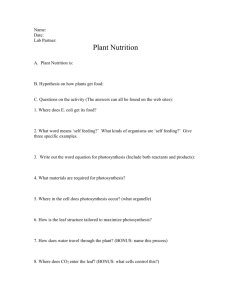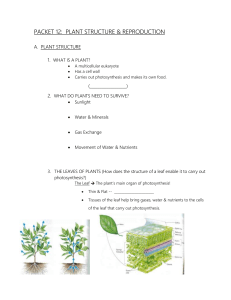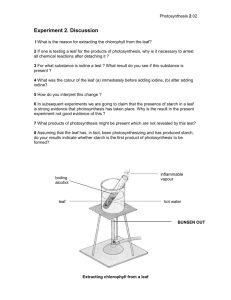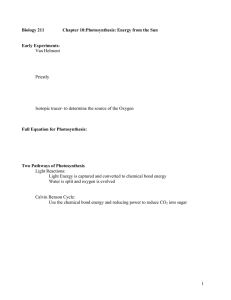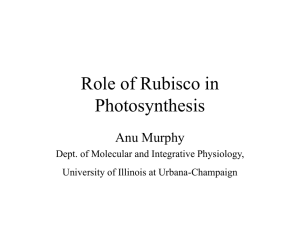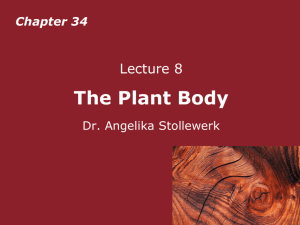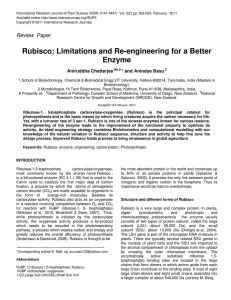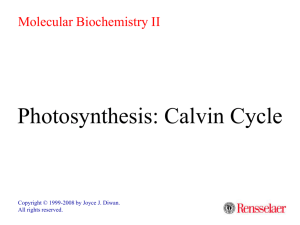BIO 366 – Plants and Environment
advertisement
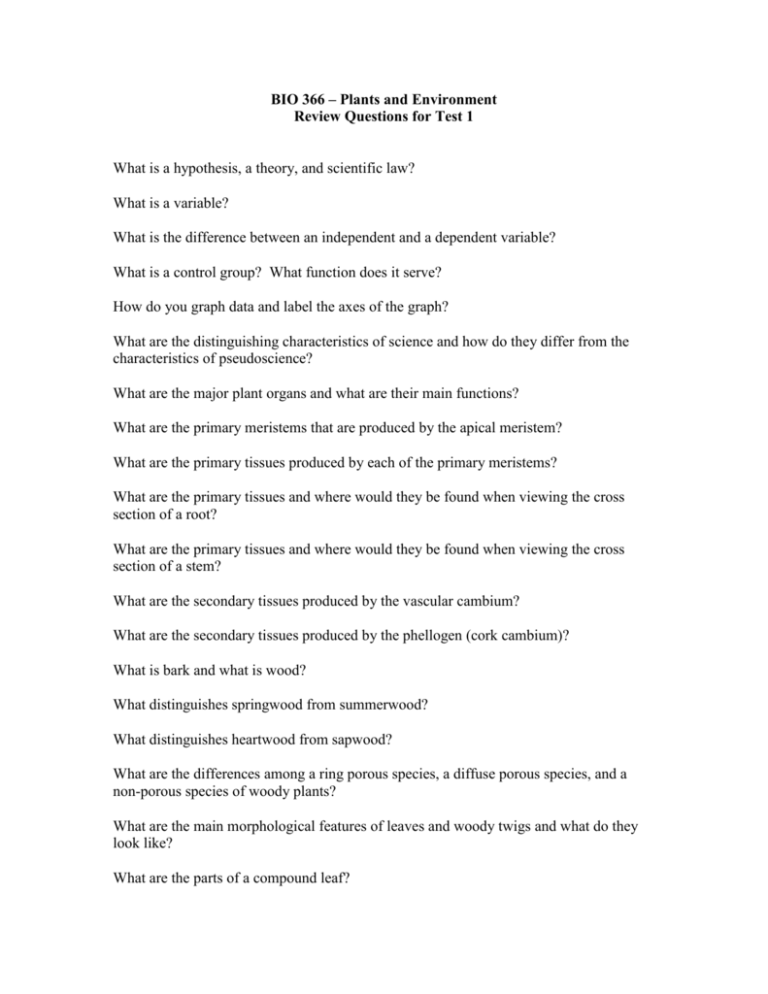
BIO 366 – Plants and Environment Review Questions for Test 1 What is a hypothesis, a theory, and scientific law? What is a variable? What is the difference between an independent and a dependent variable? What is a control group? What function does it serve? How do you graph data and label the axes of the graph? What are the distinguishing characteristics of science and how do they differ from the characteristics of pseudoscience? What are the major plant organs and what are their main functions? What are the primary meristems that are produced by the apical meristem? What are the primary tissues produced by each of the primary meristems? What are the primary tissues and where would they be found when viewing the cross section of a root? What are the primary tissues and where would they be found when viewing the cross section of a stem? What are the secondary tissues produced by the vascular cambium? What are the secondary tissues produced by the phellogen (cork cambium)? What is bark and what is wood? What distinguishes springwood from summerwood? What distinguishes heartwood from sapwood? What are the differences among a ring porous species, a diffuse porous species, and a non-porous species of woody plants? What are the main morphological features of leaves and woody twigs and what do they look like? What are the parts of a compound leaf? What is the difference between a spine, a thorn, and a stipule? What is a leaf sheath? Compare and contrast a terminal bud and a lateral or axillary bud. Compare and contrast a xerophytic, mesophytic, and hydrophytic leaf. Compare and contrast a sun leaf and a shade leaf. Be able to distinguish between adhesion, cohesion, evaporation, osmosis, diffusion, and transpiration. What influence does environmental factors (e.g., heat, wind, relative humidity) have on the rate of transpiration? How does water move through the plant and what supplies the energy for the process (organism or environment)? How do dissolved sugars move through the plant and what supplies the energy for the process (organism or environment)? What are the initial steps involved in starting water movement in plants? What are the initial steps involved in starting sugar solution movement in plants? What is the role that water and chlorophyll play in photosynthesis? What is the role of ATP and NADPH in photosynthesis? What is RuBISCO and what role does it play in photosynthesis? What kinds of plants have PEP carboxylase in addition to RuBISCO? Where is PEP carboxylase and RuBISCO located in C4 plants? Where is PEP carboxylase and RuBISCO located in CAM plants? C4 and CAM plants carry out the same biochemical reactions, so what do they do differently to allow us to distinguish them (think about differences in space and in time)? What is meant by light-dependent photosynthetic reactions? What is meant by light-independent photsynthetic reactions? How is photosynthesis important to life on earth? How do plants make the sun’s energy available to other life forms on earth? What aspects of photosynthesis are important for sustaining animal life on earth? How important is photosynthesis to the carbon cycle on earth? What are the starting and ending products of photosynthesis? What are the starting and ending products of aerobic respiration? What are the ending products of anaerobic respiration (two pathways)?

